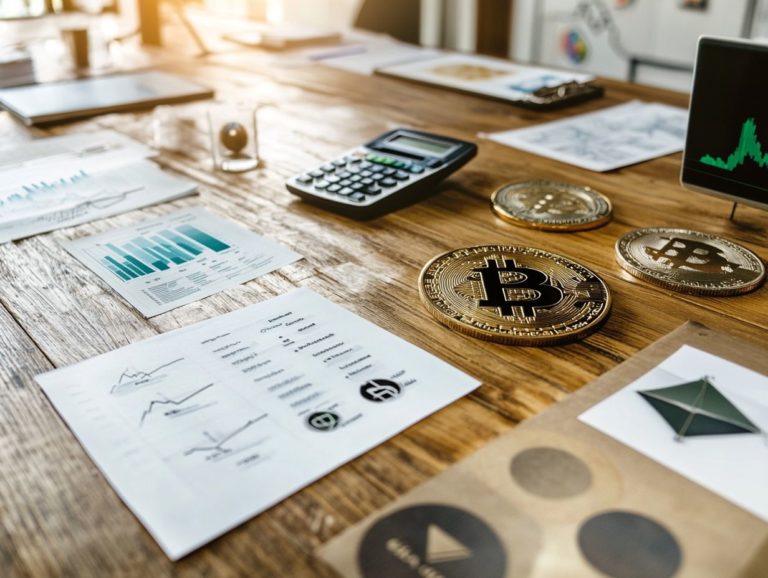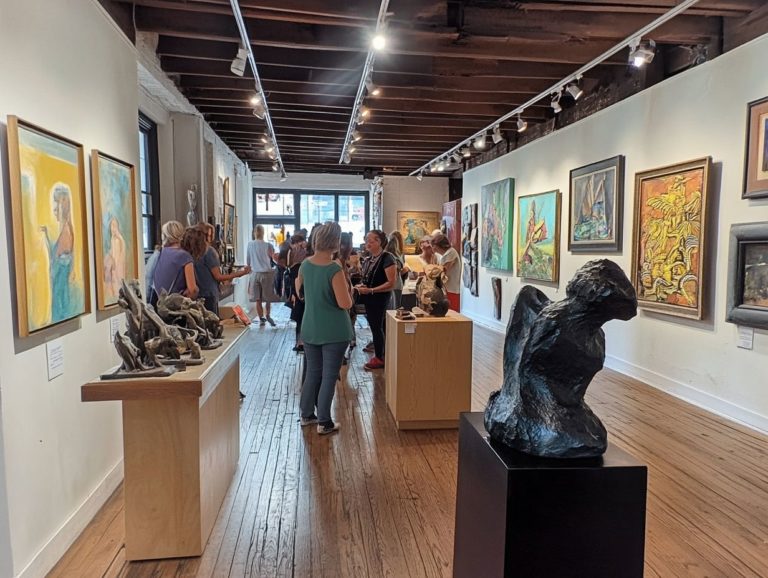The Basics of Collectibles and Art
Collecting art and collectibles transcends mere hobby; it s a journey interwoven with passion, investment, and personal expression.
In this article, you’ll discover what defines collectibles and art, along with the emotional and financial motivations that drive the collecting experience. You ll also learn how to assess the value of your pieces effectively.
Whether you re just starting or seeking to expand your collection, you’ll find practical tips and strategies tailored to your needs. Explore the best practices for selling, trading, and preserving your cherished treasures.
Dive in and uncover the captivating world of collectibles and art!
Contents
- Key Takeaways:
- Understanding Collectibles and Art
- Why People Collect and Invest in Art
- Determining the Value of Collectibles and Art
- Starting and Growing Your Collection
- Ready to dive into the exciting world of collectibles and art? Let s explore how to sell and trade effectively!
- Preserving and Protecting Your Collection
- Preguntas Frecuentes
Key Takeaways:
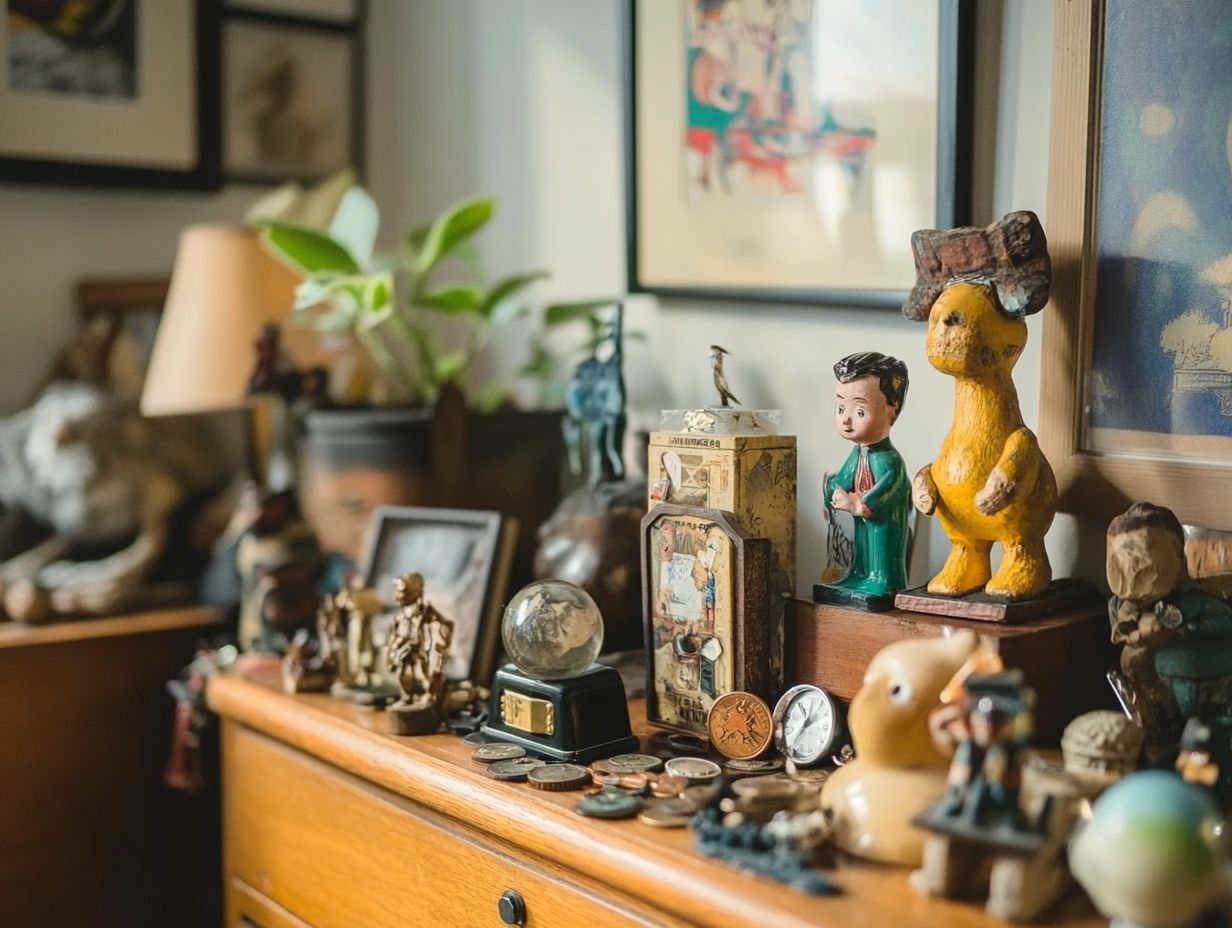
Collectibles and art include various items, from paintings to coins. People invest for emotional satisfaction and financial growth, considering rarity and condition when valuing them.
Understanding Collectibles and Art
Understanding collectibles and art requires you to explore the diverse world of collecting. It’s essential to recognize what drives your passion, the different types of art available, and the pivotal role that both local and online art dealers play in shaping the art community. For deeper insights, consider exploring what makes art collectible.
Collecting art is not just a hobby; it becomes a deep engagement that reflects your personal values and aspirations, intricately linked to an appreciation for artistic processes and themes.
It also opens the door to the rich world of art history and its evolving market trends, where emotional connections and financial considerations are key players in this dynamic landscape.
Definition and Types
The world of art is vast, including everything from traditional forms like paintings and sculptures to contemporary expressions and decorative arts, each holding unique values and meanings.
As a collector, you might be drawn to specific genres, whether it s prints from celebrated artists or original pieces that reflect modern themes. Understanding these types is crucial for appreciating art and making savvy investments in today s market.
Classical art showcases the extraordinary craftsmanship of legends like Michelangelo and Rembrandt, captivating audiences for centuries. In contrast, contemporary art stretches conventional boundaries, presenting innovative works that provoke thought and inspire dialogue.
Collecting prints from acclaimed artists allows you to own a slice of creativity while providing an accessible entry point into the art world. The influence of both renowned and emerging artists shapes market trends, guiding your choices as a collector and maximizing your investment potential.
In this vibrant landscape, art continues to evolve and resonate, inviting you to be part of its ongoing journey.
Why People Collect and Invest in Art
Individuals collect and invest in art for many reasons. Some are driven by emotional connections, attracted to the beauty and significance of unique pieces, while others are motivated by the financial potential that art holds as a collectible investment.
The art market has transformed significantly, and collectors like you are increasingly aware of how their collections can function as an investment portfolio. These portfolios can appreciate over time, especially in a landscape characterized by market fluctuations and emerging trends.
Emotional and Financial Motivations
The motivations behind your art collection weave together emotional and financial threads. You might find joy in the beauty and stories each piece holds while recognizing the investment potential that art offers.
This blend of emotions and financial potential makes collecting art a rewarding experience. You may form deep connections to certain artworks, influenced by personal histories, cultural significance, or memories tied to specific times or places.
Consider pieces by renowned artists like Banksy or Jean-Michel Basquiat; they attract dedicated admirers and witness remarkable increases in value, with some selling for millions at auctions.
As you curate your collection, your personal values and cultural background will heavily guide your choices, seamlessly blending emotional resonance with financial aspirations, ultimately shaping your experience in the art market.
Determining the Value of Collectibles and Art
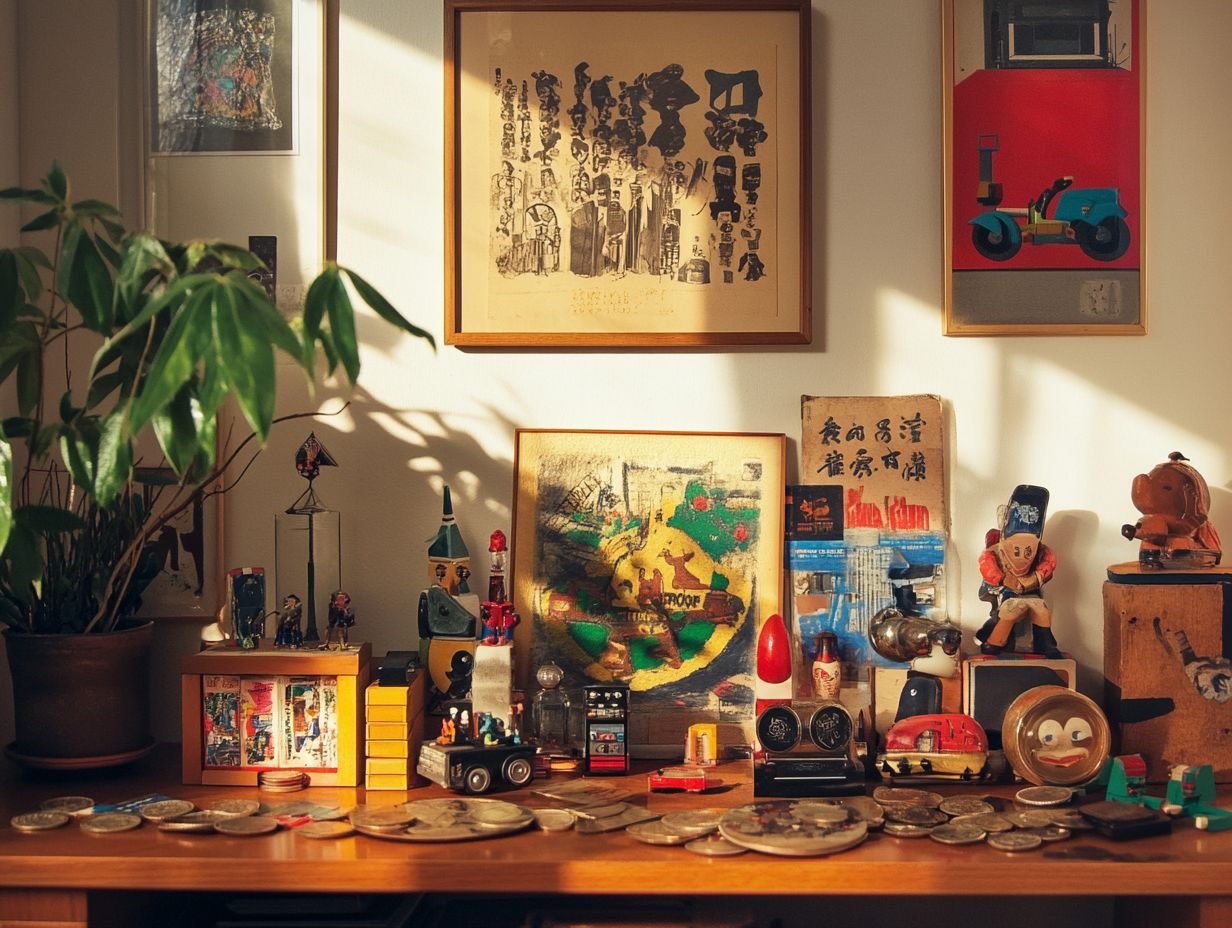
Determining the value of collectibles and art is a detailed process influenced by many factors. You’ll need to consider market demand, the reputation and historical significance of the artists, and the quality of the artwork itself.
Understanding these elements is essential for art collectors and investors navigating the complex art market. By grasping these intricacies, you can effectively assess the investment value of your pieces and make informed decisions about your collection.
Factors that Affect Value
Several factors influence the value of collectibles and art, including rarity, history of ownership (provenance), and the artist’s recognition. As an art collector, keep these elements in mind when evaluating potential investment value.
In today’s dynamic market, trends shift rapidly, shaped by contemporary cultural movements and the broader economic landscape. For instance, the growing interest in sustainable and eco-friendly art practices reflects a desire for artworks that captivate the eye and resonate with social values.
This evolving environment requires you to stay informed about artists gaining traction in these emerging fields, as such factors can significantly impact future resale values. For example, the rising appreciation for works created by artists focused on environmental themes means pieces that align with these narratives are becoming increasingly sought after.
Thorough research and networking within the art community can provide invaluable insights, ensuring you make informed decisions that enhance the worth of your collection.
Starting and Growing Your Collection
Starting and growing your collection is an exciting adventure waiting for you! This journey calls for meticulous planning, thorough research, and a keen understanding of the art market dynamics.
As a beginner collector, establishing a diverse array that includes both original works and prints can significantly enhance your appreciation of art while boosting your investment potential.
Visiting art galleries and fairs offers an exceptional opportunity to uncover unique pieces and forge connections with local and online art dealers, who can guide you on your collecting journey.
Tips for Beginners
- Discover unique artwork that resonates with your individual aesthetic often found by engaging with various galleries and local artists.
- Set clear collection goals to guide your efforts, focusing on specific themes or mediums that inspire you.
- Network with other collectors to foster a sense of community and gain insights into market trends and emerging artists.
- Attend art fairs to explore diverse pieces, encountering both established names and fresh talents.
- Balance personal preferences with investment considerations, ensuring each piece not only brings you joy but also has the potential to appreciate in value over time.
Strategies for Expanding Your Collection
Expanding your collection requires a strategic approach that considers market trends, personal interests, and investment value. This ensures you curate a well-rounded assortment of art pieces.
Exploring local galleries can be a game changer for art enthusiasts, as they often showcase emerging talents and unique finds that may not be available in larger venues.
Partnering with established art dealers can provide invaluable insights and exclusive access to coveted works that elevate your collection.
The internet is a treasure trove of resources, from virtual galleries to art marketplaces, making it easier than ever to discover new creations that resonate with your taste.
Stay committed to ongoing education, refining your understanding of art history and market dynamics. This knowledge deepens your appreciation and equips you to make smarter investment decisions down the line.
Ready to dive into the exciting world of collectibles and art? Let s explore how to sell and trade effectively!
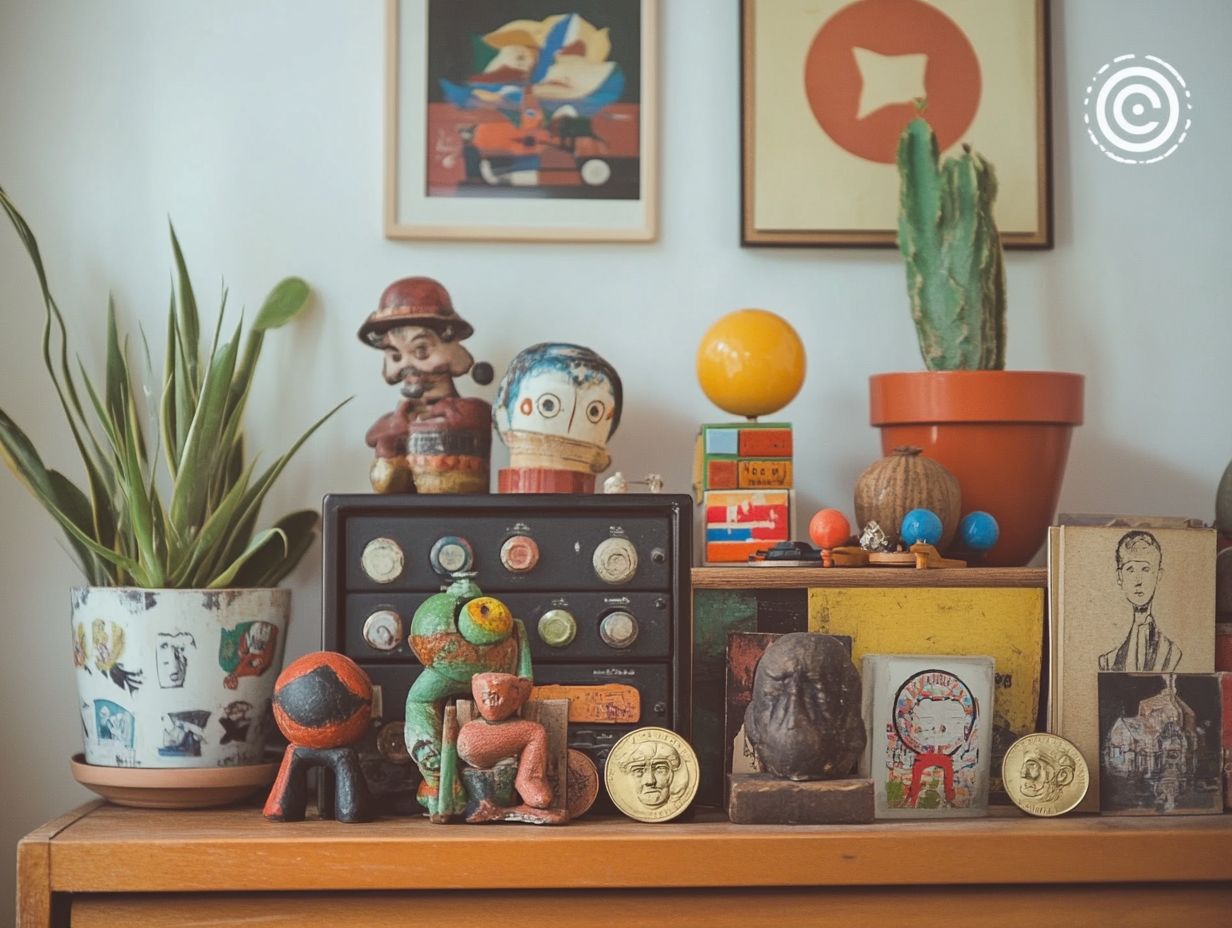
Selling and trading collectibles and art demands a keen understanding of the best practices and platforms available in the art market. Whether you choose to engage with local art dealers, explore online galleries, or participate in major art auctions, having this knowledge is essential.
Understanding the ins and outs of art exhibitions and auctions empowers you to maximize your returns on investments while also enabling you to trade or sell pieces from your collectible portfolio with utmost confidence.
Best Practices and Platforms
Navigating the landscape of selling and trading art requires you to grasp best practices and familiarize yourself with various platforms, from local art dealers to international auction houses.
As an artist or collector, you should be well-versed in several key components that can significantly impact the success of your sale. Proper paperwork is important; think appraisals, certificates of authenticity, and provenance records that build trust and verify the artwork s value.
In terms of pricing strategies, conducting thorough market research will aid you in setting a competitive yet fair price, ensuring potential buyers recognize the true worth of your art.
For marketing, leveraging social media, online galleries, and targeted advertising will help you reach a broader audience. Each platform offers unique benefits; online marketplaces provide a wider reach, while local galleries often deliver a more personalized experience.
Knowing these pros and cons helps you make informed decisions that align with your artistic vision and financial goals.
Preserving and Protecting Your Collection
Preserving and protecting your collection is crucial for maintaining its value and significance over time. This requires attentive art maintenance, thoughtful storage, and vigilant security measures.
As an art collector, it s imperative that you proactively adopt preventative strategies, including art insurance and secure storage solutions. By doing so, you safeguard your investments against potential damage or loss, ensuring that your unique artwork remains in pristine condition for years to come.
Preventative Measures and Maintenance
Implementing preventative measures and maintenance routines is essential for protecting your art collection from potential threats and ensuring its longevity.
Start by establishing a controlled environment; maintaining stable temperature and humidity levels is critical to preventing damage from fluctuations. Consider secure storage options, like climate-controlled display cases, which provide an excellent barrier against dust and direct sunlight that can fade colors over time.
Investing in comprehensive art insurance is paramount, as it safeguards you against unforeseen incidents such as theft, fire, or water damage. Regularly reviewing your collection s condition and consulting with professional conservators are also effective strategies.
By taking these actionable steps, you can significantly enhance the safety and preservation of your cherished pieces.
Preguntas Frecuentes
A continuaci n, algunas preguntas comunes sobre la colecci n y el arte:
Qu son los objetos de colecci n y el arte?
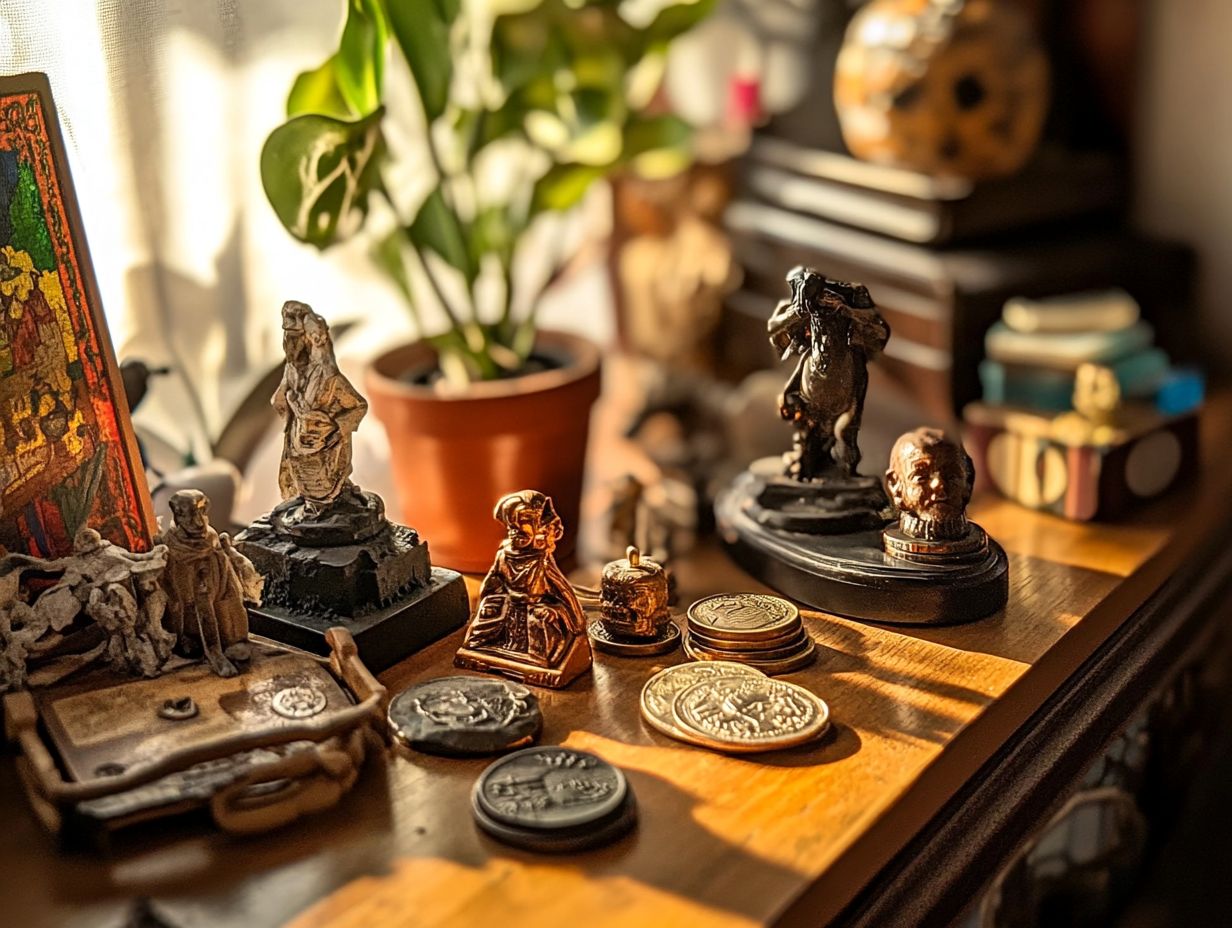
Los objetos de colecci n y el arte son objetos o piezas que tienen un valor monetario o sentimental para individuos o la sociedad. Pueden incluir una amplia variedad de art culos como monedas, sellos, antig edades, pinturas, esculturas, y m s.
Por qu la gente colecciona art culos?
Las personas coleccionan art culos por diversas razones, incluyendo el disfrute personal, prop sitos de inversi n, importancia hist rica y atractivo est tico. Tambi n puede ser una forma de preservar y recordar recuerdos o momentos importantes.
C mo empiezo a coleccionar?
El primer paso para coleccionar es determinar qu tipo de art culos te interesan y cu l es tu presupuesto. Tambi n es til investigar el valor de mercado y la autenticidad de los art culos que te interesan y conectarte con otros coleccionistas para obtener consejos y recursos.
Cu les son los diferentes tipos de objetos de colecci n y arte?
Existen muchos tipos de objetos de colecci n y arte. Puedes encontrar arte fino, art culos de la cultura popular, memorabilia deportiva, libros y manuscritos raros, juguetes vintage y m s.
La categor a que elijas depender de tus intereses y objetivos.
C mo puedo cuidar mis objetos de colecci n y arte?
Cuidar tus objetos de colecci n es esencial para preservar su valor. Almac nalos en un lugar fresco y seco, evita la luz solar directa y man jalos con cuidado.
Para art culos valiosos, es recomendable tasarlos y asegurarlos.
D nde puedo comprar o vender objetos de colecci n y arte?
Hay muchas opciones para comprar y vender estos objetos. Puedes usar mercados en l nea, subastas, tiendas de antig edades o comerciantes especializados.
Investiga bien y trabaja con vendedores de buena reputaci n para asegurarte de que los art culos sean aut nticos y valiosos.


